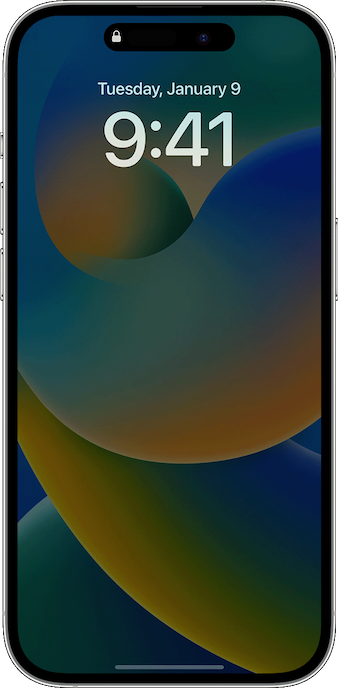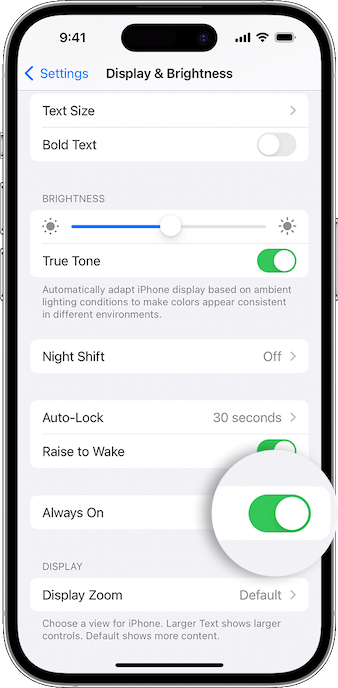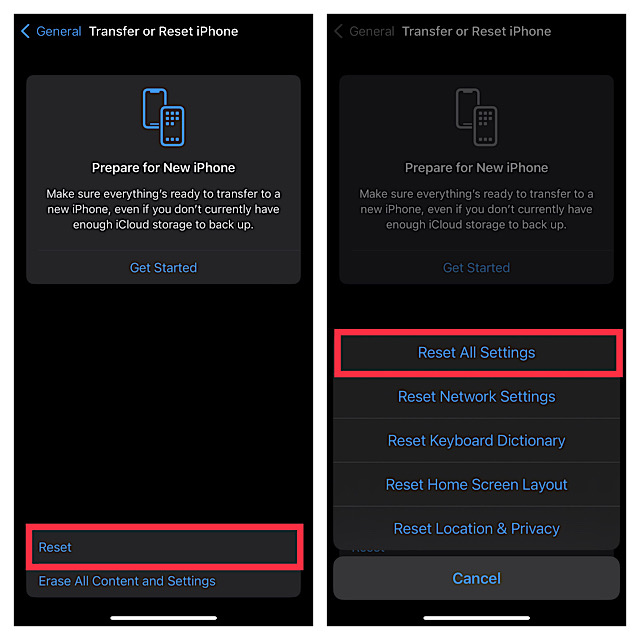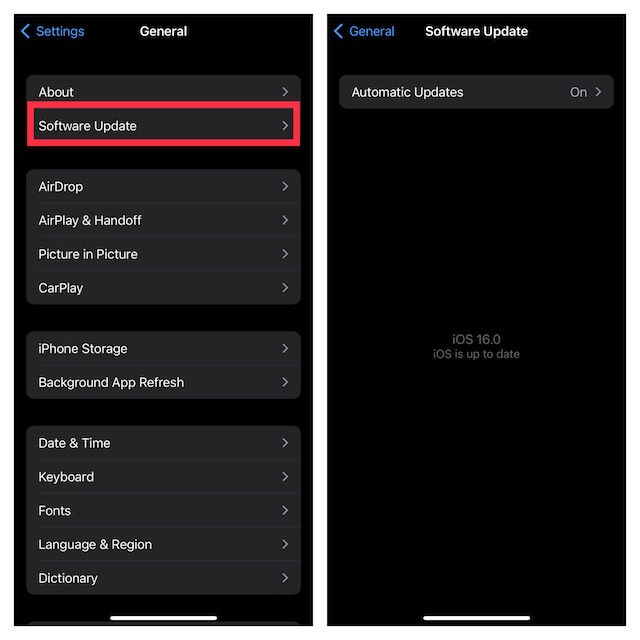Tips to Fix iPhone 14 Pro Always-On Display Not Working
With a good understanding of the issue upfront, you can win half of the battle beforehand. Thus, make sure to get started with it.
Why Has the Always-On Display Stopped Working on My iPhone 14 Pro?
To put it straight, the ill-functioning of the always-on display on the iPhone 14 Pro could very well be the failure of both hardware and software. Looking at the complaints from several users, the issue seems to be due to a software bug. Thus, we will put more focus on resolving the problem with some handy solutions.
Not to mention, there are several situations in which iPhone automatically turns off AOD in order to cut down unnecessary power consumption. Your iPhone learns from your usage and turns off the Lock Screen to extend the battery life or for that matter ward off any battery drain.
If unfortunately, nothing comes to your rescue, you must take it from the lens of a hardware problem. And in this situation, contacting Apple for immediate help is always a wise move.
In Which Situations Does iPhone Automatically Disable the Always-On Display?
I don’t think many iPhone 14 Pro users know all the scenarios in which the always-on display is automatically disabled. If you are also not sure about it, I would recommend you get rid of the confusion with a clear understanding so that you won’t be left wondering about behind the scene smart play that Apple has put into practice. Your iOS device turns off AOD…
If you put your iPhone in your bag/pocketIf your iPhone is placed face downIf you have enabled Sleep Focus ModeWhen Continuity Camera is enabledIf your iPhone is connected to CarPlayWhen Low Power Mode is enabled on your iPhoneWhile wearing Apple Watch, if you leave your iPhone behindIf you have not used your iPhone for a while, AOD will automatically turn off
Turn OFF/ ON Always On Display
Probably the easiest way to fix the iPhone 14 Pro always-on display not working problem is to turn it off and on. Yeah, you read that right! The soft reset has done the trick for a good many users. Hence, you can count on it.
On your iPhone, navigate to the Settings app -> Display & Brightness. After that, turn off the switch next to Always On.
Now, restart your iPhone. Press and hold the volume up button and the power button at once. Then, drag the power off slider to turn off your iPhone. Make sure to wait for a few seconds and then press the side button again to reboot your iOS device.
When the device has rebooted, head into the Display & Brightness setting and then turn on Always On.
Force Restart Your iPhone
Widely considered to be the go-to troubleshooter, a hard reset is what you should try when faced with a common issue. At times, it can even surprise you by resolving complex problems. Therefore, you should have a go at it as well.
To get going, press and quickly release the volume up button. Then, press and quickly release the volume down button. Finally, press and hold the power button until you see the Apple logo on the screen. As soon as your iPhone has rebooted, find out if the AOD has started to work at its best.
Reset All Settings
Another trusted solution that you should try to troubleshoot the ill-functioning always-on display on your iPhone is the factory reset. I can’t remember how many times it has rescued me. Hopefully, it is able to put an end to this problem as well.
On your iPhone, head over to the Settings app > General > scroll down to the bottom, and tap on Transfer or Reset iPhone.Next, tap on Reset > Reset All Settings. Be sure to enter your device passcode as well as the Screen Time passcode, if you have set it up on your device.
Update Software on Your iPhone
As outlined above, a software bug could also be preventing the always-on display from working perfectly. Now, your best bet to deal with this bug is the software update. Since most iOS updates come with a wide range of performance improvements and bug fixes, there is always a better chance of resolving a persistent issue or the one that has already been spotted by Apple.
On your iPhone, open the Settings app > General > Software Update.After that, download and install the latest version of iOS.
Contact Apple Support Without Fail, If Nothing Works…
If the always-on display continues to misbehave on your iPhone 14 Pro, contact Apple Support at the earliest. Since the likelihood of a hardware failure is strong, you shouldn’t hesitate in contacting the company for a permanent fix.
Finally, iPhone 14 Pro Always-On Display Issues Resolved
And that’s about it! Hoping the problem is now behind your back. Would you like to share your feedback and the tips that have got the job done for you? It would be nice to know that in the comments. You may also want to catch up with:
7 Ways to Fix Photo Shuffle Not Working on iPhone Lock Screen in iOS 16iPhone Slow After iOS 16 Update? 11 Tips to Speed Up iOS 16



